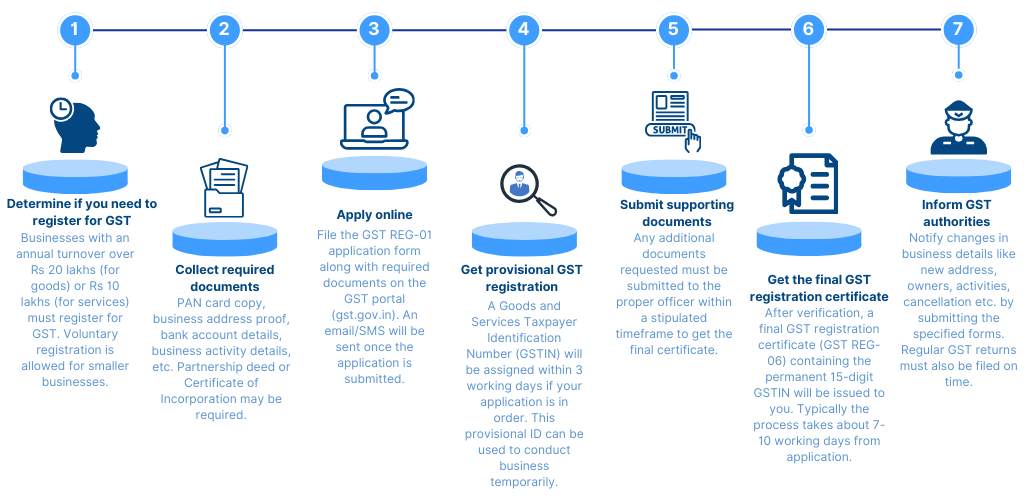INTRODUCTION TO
GST Registration in India
GST was implemented in India on July 1, 2017 after the GST Act was passed in the parliament. It replaced multiple cascading taxes levied by the central and state governments. It has subsumed over a dozen taxes including central excise duty, services tax, additional customs duty, surcharges, state-level value-added tax, and octroi.
GST has 4 tax slabs – 5%, 12%, 18%, and 28% along with a tax-exempt category. Certain goods like petroleum products, alcohol, etc. are not covered under GST currently. It follows a consumption-based taxation structure, meaning taxes are levied at the point of consumption instead of production.
It has simplified the indirect tax structure in India and made taxation uniform across states by subsuming all indirect taxes under one umbrella.
Implementing GST has helped create a unified common national market by removing economic barriers across states. It is based on the notion of shared sovereignty between the centre and states as both have concurrent powers to levy and collect GST.










































